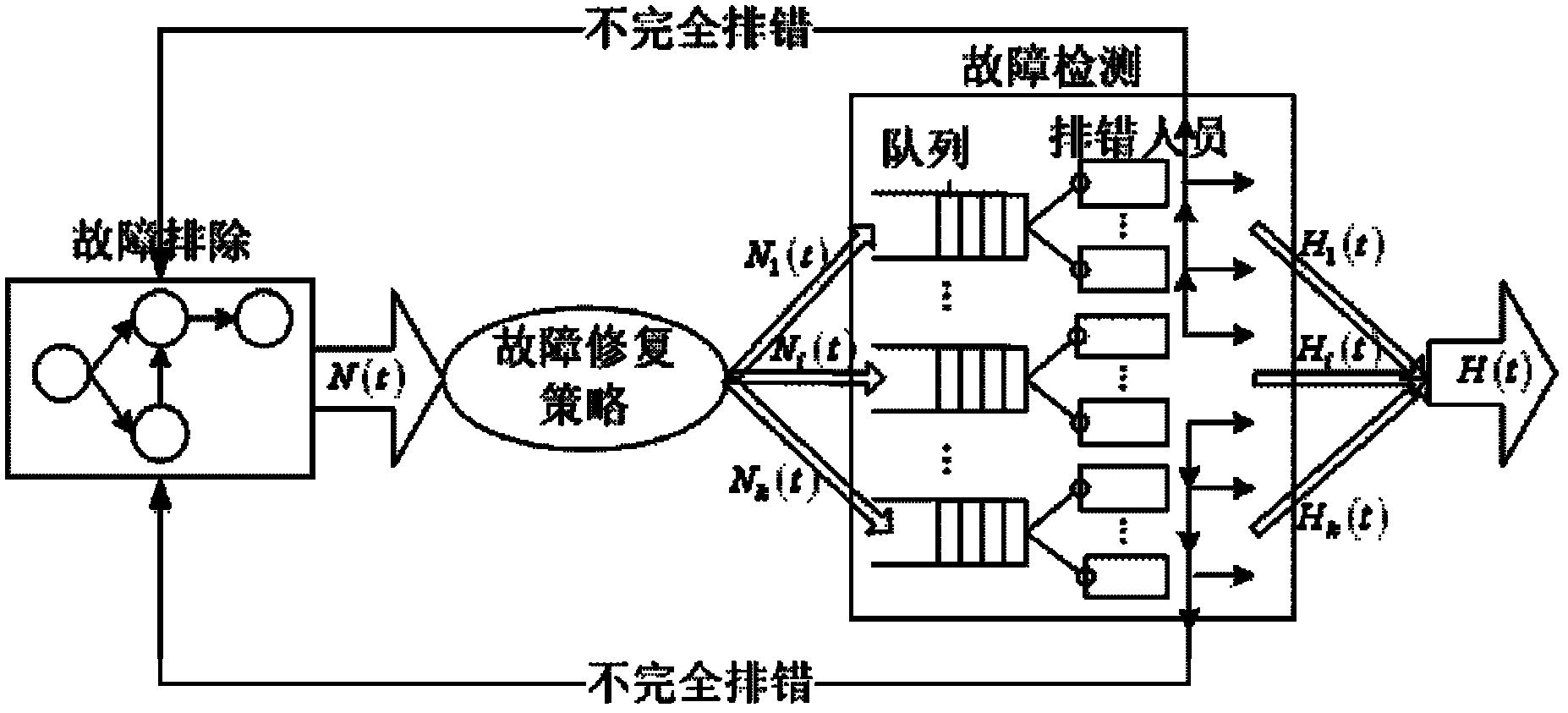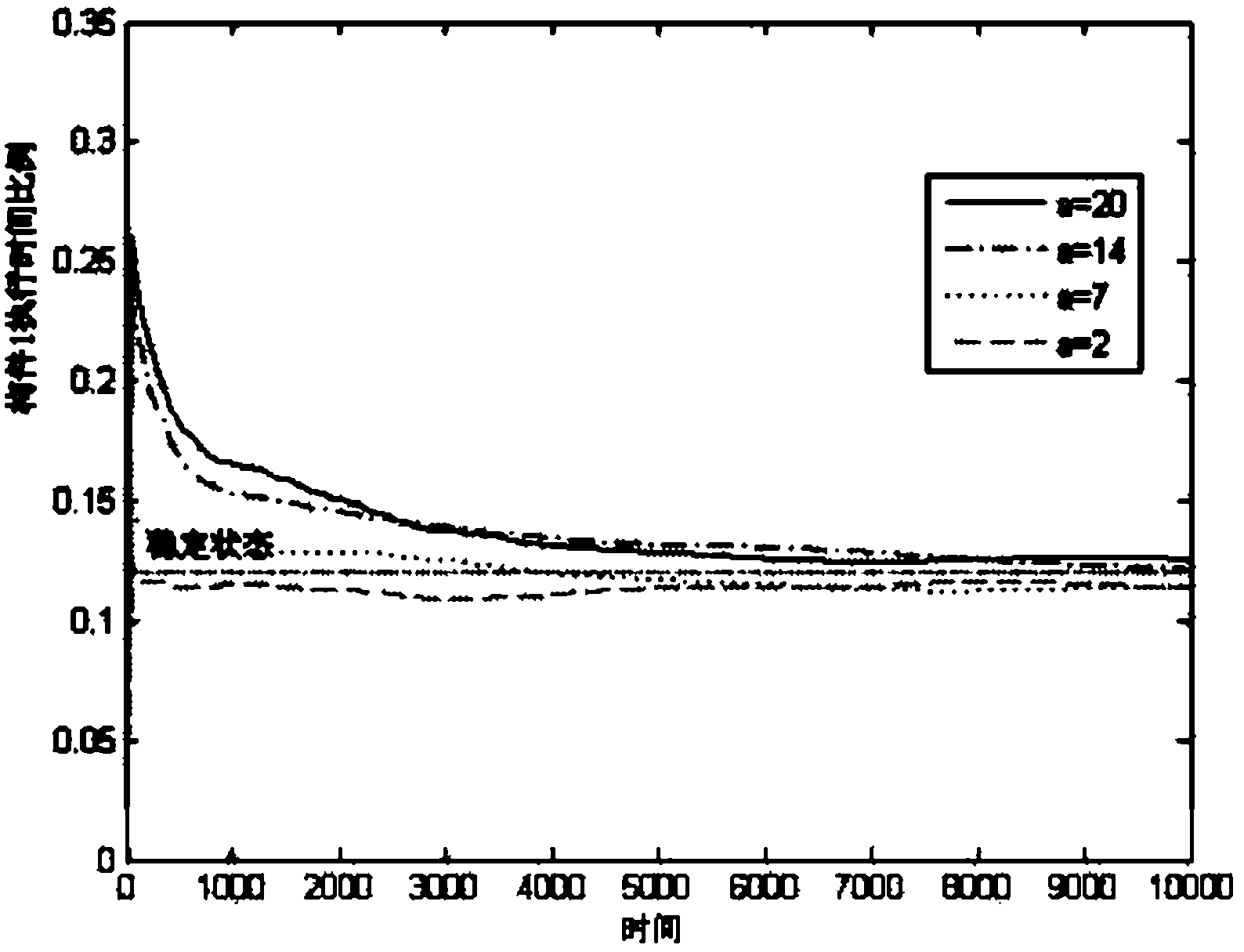Method for analyzing reliability of component software considering failure recovery process based on HISQM (Hybrid Infinite Server Queue Module)
A technique for troubleshooting and queuing models, applied in software testing/debugging, etc.
- Summary
- Abstract
- Description
- Claims
- Application Information
AI Technical Summary
Problems solved by technology
Method used
Image
Examples
specific Embodiment approach 1
[0055] Specific implementation mode one: combine figure 1 This embodiment is described. The component software integration test in this embodiment refers to the process of assembling all the components in the application for testing, and all the components in the application work together. As tests are performed, faults are continuously discovered and eliminated, and the software application experiences an increase in reliability. The integration testing process includes the fault detection process and the troubleshooting process. An integration testing troubleshooting strategy links these two stochastic processes.
[0056] During the integration testing process, the troubleshooting activities are organized according to the troubleshooting strategy. Troubleshooting strategy According to the actual development characteristics and budget and schedule requirements, the troubleshooting resources are reasonably allocated, and the detected faults are assigned to the corresponding...
specific Embodiment approach 2
[0124] Specific implementation mode two: combination Figure 2 to Figure 13 This embodiment is described. The difference between this embodiment and the specific embodiment 1 lies in the experimental analysis of the HISQM queuing model. HISQM model parameter setting, the figure 2 The architecture model of the component software application is brought into the improved additive model, and the steady-state probability vector of the component in the application is calculated as
[0125] η=[0.1297, 0.1177, 0.1181, 0.0543, 0.1751, 0.0326, 0.0798, 0.1133, 0.0497, 0.1297]
[0126] Let the component execution time length be 1 time unit each time a component is accessed, and bring them and η into the improved additive model to calculate the execution time ratio of each component.
[0127] The failure behavior of each component is modeled with the improved Goel-Okumoto model, as shown in Equation 7. Without loss of generality, it is assumed that the failure models of all components ...
PUM
 Login to View More
Login to View More Abstract
Description
Claims
Application Information
 Login to View More
Login to View More - R&D
- Intellectual Property
- Life Sciences
- Materials
- Tech Scout
- Unparalleled Data Quality
- Higher Quality Content
- 60% Fewer Hallucinations
Browse by: Latest US Patents, China's latest patents, Technical Efficacy Thesaurus, Application Domain, Technology Topic, Popular Technical Reports.
© 2025 PatSnap. All rights reserved.Legal|Privacy policy|Modern Slavery Act Transparency Statement|Sitemap|About US| Contact US: help@patsnap.com



